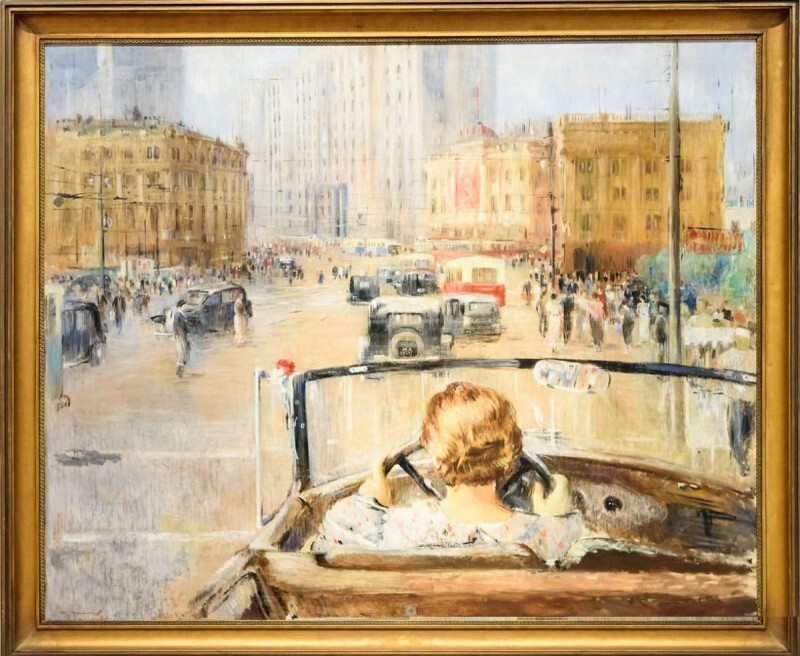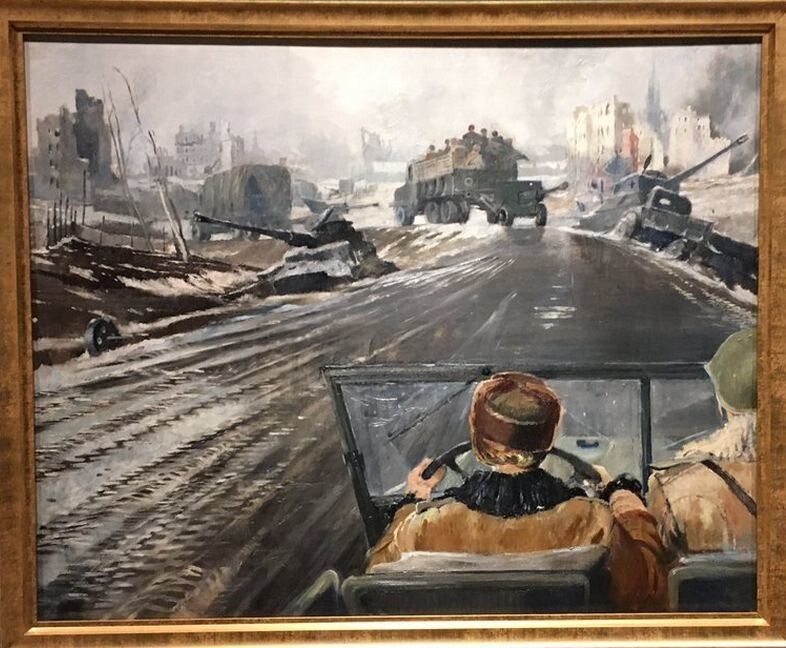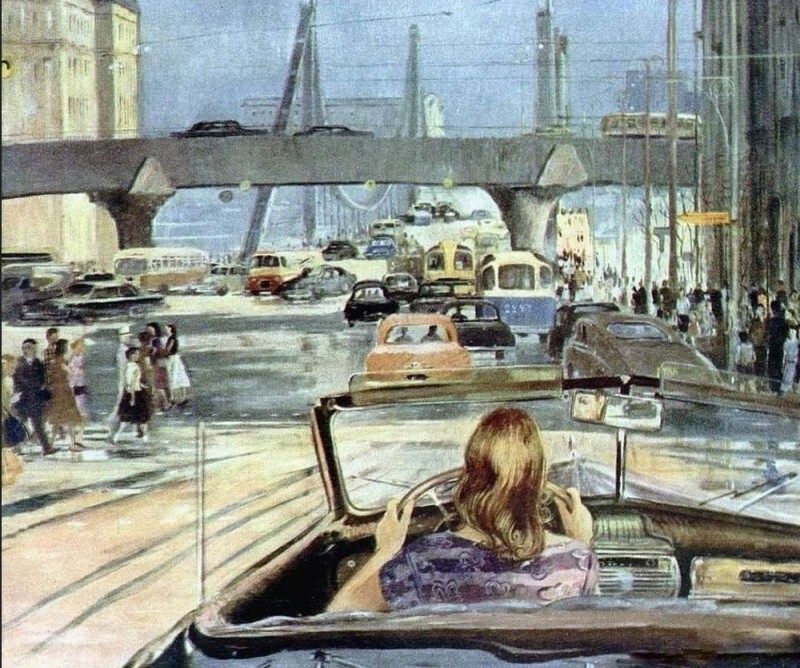November 26 marks the 120th anniversary of the artist Yuri Pimenov (1903-1977). His most famous painting is “New Moscow”, painted in 1937. A motorist is driving around the capital in an open convertible (his wife posed for the artist as a model). The main thing in the picture, of course, is the festive mood of the renewed Moscow, washed by the rain, on a sunny summer day. And perhaps there is also a feeling that this girl is looking into the future. 
Yuri Pimenov (1903-1977). New Moscow. 1937
And the future is bright and sunny, full of happiness and joy. Although for our contemporaries the date of creation of the picture evokes completely different associations, and one of its commentators, Sergei Ivannikov, gloomily remarked: “I have serious doubts that the heroine of “New Moscow” will live until the end of the year in her Moscow apartment.”
But the future turned out to be unexpected...
Yuri Ivanovich depicted the coming future in a painting that is an obvious continuation of the theme of “New Moscow”. The same angle... even, probably, the same girl (and the model is exactly the same, the artist’s wife). 
Yuri Pimenov. Front roads. 1944
Yes, that's it. And what is there ahead, around the bend in the front line, besides the burned enemy equipment?..
Another decade and a half passed, and Yuri Pimenov returned to this topic again.
His next picture was called exactly the same as the first - “New Moscow”.
This time the girl is not driving along Teatralny Proezd, but looking at the overpass of the Crimean Bridge, which did not yet exist in 1937. The brands of cars have changed, the open convertibles of the 1930s have been replaced by closed models, so the picture in this regard already looks a little out of date. But morals have become more relaxed and free, which is succinctly indicated by the girl’s flowing long hair. And Moscow is again elegant, refreshed by the rain, bathed in sunshine, again in anticipation of the coming wonderful future...
But the future turned out to be unexpected again... 
Yuri Pimenov. New Moscow. 1960
0 comments
